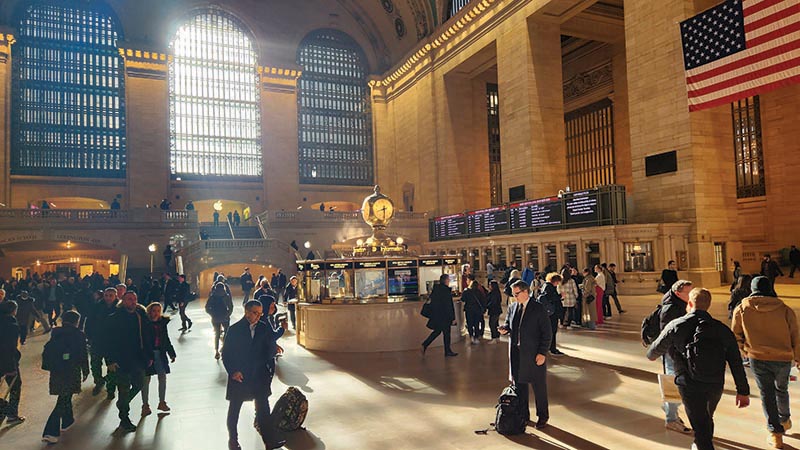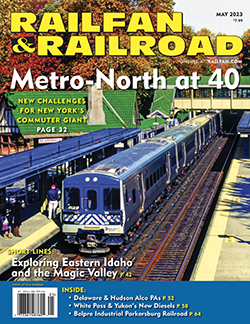 by Otto M. Vondrak/photos as noted
by Otto M. Vondrak/photos as noted
The scene out the picture window is majestic as the train skirts the wide waters of the Hudson River. A single P32 pushes seven single-level coaches on a ribbon of welded rail, with the Hudson Highlands giving way to the bedroom communities of suburban New York. The coach interior is spartan, yet clean, brightly lit, and comfortable. Sixty years ago, these same rails were polished by New York Central’s 20th Century Limited, once the flagship of an extensive passenger operation. A generation later, crowded and derelict commuter trains would share space with Amtrak (and a handful of freights).
As the bleak 1970s gave way to the optimistic 1980s, rapid change would also come to the commuter lines of the Northeast. While state agencies had warmed to the idea of subsidized commuter rail service, they lacked the authority to improve the trains and stations they didn’t own or negotiate with workers they didn’t hire. Massive industry deregulation and a need for an independent Conrail paved the way for the creation of Metro-North in 1983, leading the industry for decades as a shining example of drastic service turnaround and investment where it was needed most. How we got here is almost as strange a story as where we are.
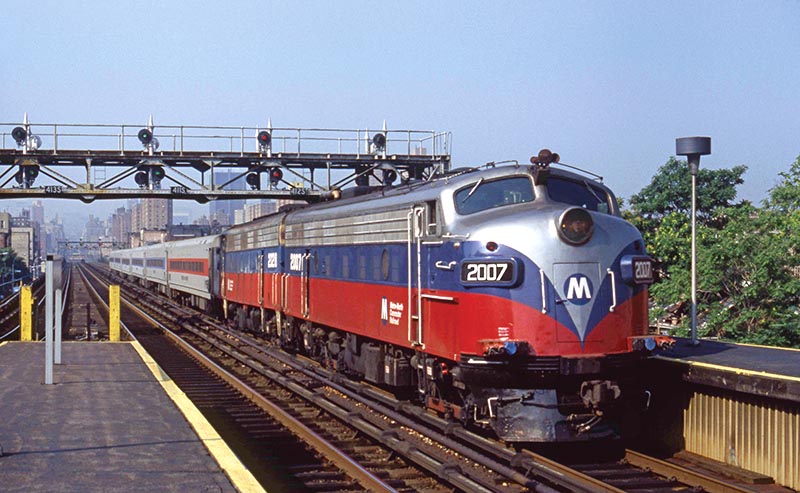
ABOVE: By the 1990s, Metro-North’s diesel fleet had been rebuilt with HEP replacing steam heat. MN FL9 2007 (ex-NH 2031) and 2028 (ex-NH 2018) lead a northbound Hudson Line train at 125th Street in July 1989. —Lou Gerard photo
History
You could make a strong argument that the concept of “commuting” was invented here. Started as a Manhattan horsecar line in 1831, New York & Harlem Railroad had grown into a full-fledged steam road building north to the suburbs of The Bronx and Westchester County by the 1840s. For the first time, it was practical to enjoy a home in the country and work in the city. In 1853 the railroad offered “commuted” discount fares and frequent schedules to encourage travel by train (and enticed new home construction and the development of the suburbs).
By 1852, the railroad stretched from midtown Manhattan more than 125 miles north to the village of Chatham, connecting with routes to Boston and Albany. The region became known as the “Harlem Valley,” taking its name from the railroad that ushered in a period of rapid growth, not only in the suburbs, but also created access to new markets for rural farmers and dairies. This growth caught the attention of shipping magnate “Commodore” Cornelius Vanderbilt, and NY&H became his first railroad property in 1864, forming the cornerstone of what would eventually become the mighty New York Central.
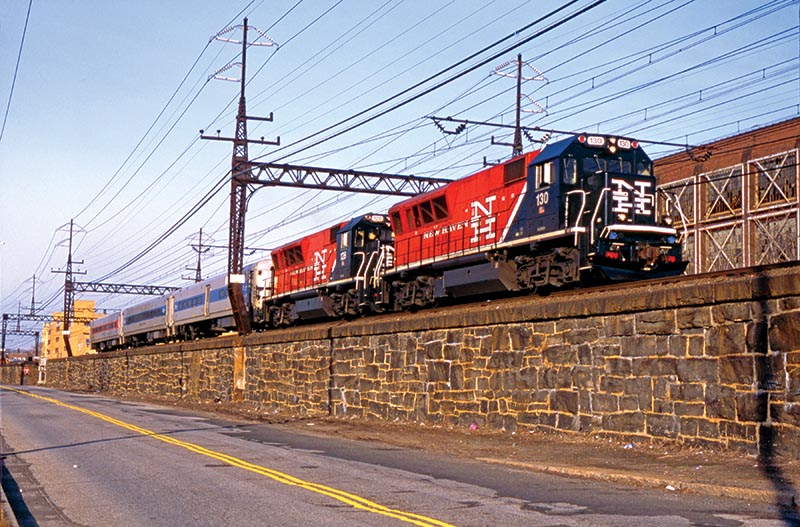
ABOVE: A pair of CDOT BL20GH units lead a morning Waterbury Branch train along the elevated main line at East Bridgeport, Conn., on February 4, 2012. These units have recently been repainted to match the rest of the CTrail fleet, minus logos. —Otto M. Vondrak photo
After dramatic fluctuations in revenue and traffic took their toll in the first half of the 20th century, New York Central and Pennsylvania Railroad merged in 1968 to form Penn Central, which led to a disastrous bankruptcy in 1970 that set forth a chain of events that continues to shape the landscape of American railroading today. As Northeastern railroads fell like dominoes one after another in Penn Central’s wake — taking a large portion of the nation’s economy with them — the government’s answer was to pass legislation in 1973 to buy out the railroad properties, rationalize and rebuild them, and help return the region’s rail network to profitability.
April 1976 saw the creation of Conrail, and billions were invested in the physical plant and rolling stock, while thousands of miles of track were abandoned or spun off. Within a few years, Conrail was making significant progress, but was still bound by the same archaic rules as the other railroads when it came to competitive rate-making. Making their case to Congress resulted in the Staggers Act of 1980, which led to deregulation of the railroad industry. Again, Conrail made great strides, even declaring a profit for the first time in 1981, but one major problem remained for the freight railroad — the question of commuters.
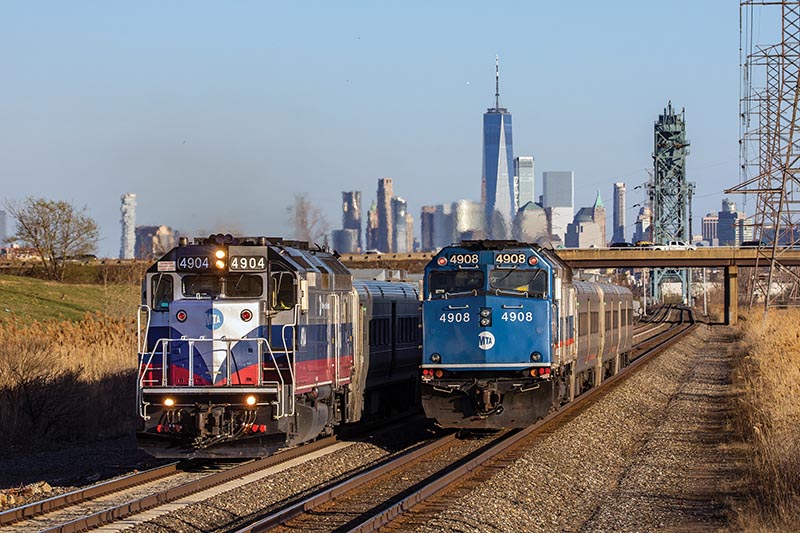
ABOVE: With the skyline of lower Manhattan forming the backdrop, two Metro-North “West of Hudson” trains pass each other on NJ Transit’s (former Erie) Main Line in Lyndhurst, N.J., on April 8, 2021. The New Jersey Turnpike and Hackensack River bridge are in the distance. —Marc Glucksman photo
Conrail inherited commuter operations from its six component railroads making it the second-largest passenger operator in the country after Amtrak. While the commuter services were subsidized, there were still huge losses related to the associated labor contracts and the myriad support facilities like stations and repair shops. Once again, Conrail president Stanley L. Crane appealed to Congress for help realizing its stated goal of returning to profitability (and to the public sector); the result was the Northeast Rail Service Act of 1981, which directed that all Conrail commuter services must be transferred to new operators by the end of 1982.
Suddenly, the clock was ticking as transit authorities up and down the Northeast Corridor scrambled to come up with a plan (except in Boston, where Conrail’s commuter service was taken over in 1977 by Boston & Maine on behalf of the Massachusetts Bay Transportation Authority). It quickly became clear that the three major transit agencies would not be able to pool resources and form one single operating authority. In New Jersey, the state had briefly flirted with the idea of contracting with the newly formed Amtrak Commuter subsidiary, and was even approached by Boston & Maine before ultimately deciding on direct operation under NJ Transit. Philadelphia’s Southeastern Pennsylvania Transportation Authority also chose direct operation of its commuter rail lines. After months of study, New York’s Metropolitan Transportation Authority also decided that direct operation was the best option. Unlike NJT and SEPTA, the MTA created a brand-new subsidiary — Metro-North Commuter Railroad Co.
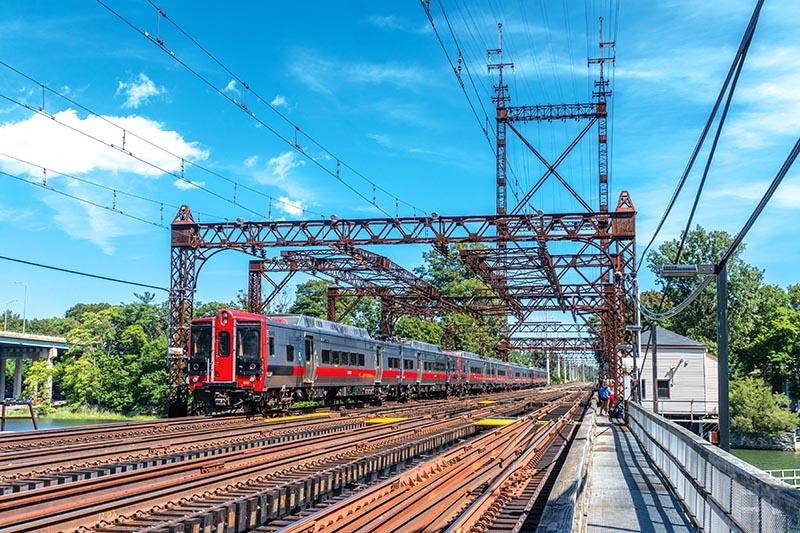
ABOVE: Part of the New Haven Line’s infrastructure includes movable spans like the Scherzer rolling lift bascule bridge over the Saugatuck River at Westport, Conn., built in 1905 and slated for future replacement. This busy route is shared with Amtrak as well as nocturnal freight trains operated by Providence & Worcester and CSX. —Matt Csenge photo
This mouthful of a name — containing the redundant “commuter railroad” in its title — would come to symbolize a turning point. Even though the name change took effect on January 1, 1983, the transition was not a smooth one. Metro-North was stuck with the same decrepit fleet of trains that Conrail ran the night before, serving run-down suburban depots on jointed track governed by block signals, interlocking towers, and train orders. Historic Grand Central Terminal was “grand” in name only, as decades of deferred maintenance had taken their toll. On top of it all, a strike on Monday, March 7, brought the new railroad to a standstill, stranding more than 90,000 daily commuters. At stake was who had ultimate authority to determine crew sizes — the unions or the MTA. The strike was broken six weeks later, on April 18, and arbitration found in favor of the railroad. It was a heck of a way to introduce a new service to a wary commuting public.
While it seemed Metro-North had everything going against it, the new railroad had experienced managers and employees dedicated to turning around its fortunes. One of the first major improvements was the extension of third rail electrification on the Harlem Line from North White Plains to Brewster North (renamed “Southeast” in 2003), a project actually started in 1982 and completed in 1984. Included in the $75 million project was the construction of 13 new high-level platform stations, as well as the delivery of 142 new M-3 electric multiple-unit cars built by Budd between 1984 and 1985. Wayside signals were phased out, modern cab signals installed, and towers were closed so all dispatching functions could be consolidated in New York. (Only S.S. 75 in New Haven, Conn., remained open until 2004.) The venerable ex-New Haven dual-mode FL9s were sent out for rebuilding to extend their useful service lives as there were no viable new options on the market at the time. New “Shoreliner” coaches built by Bombardier came in to replace the last of the steam-heated legacy fleet…


